#3D Printed Prosthetic Limbs
Photo
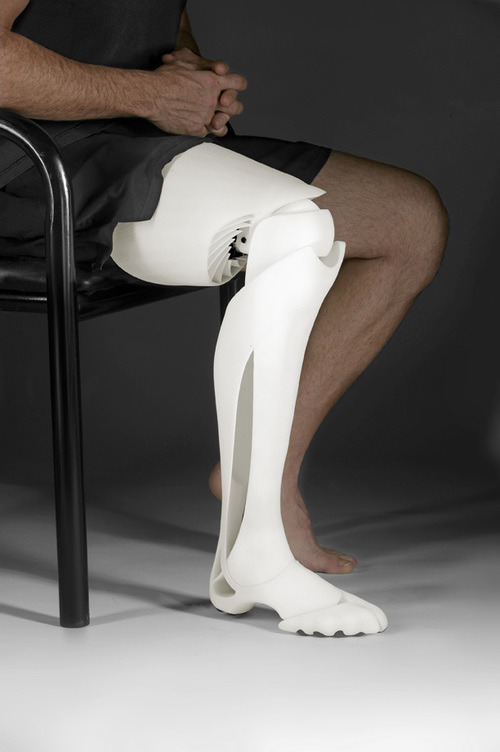

Transfemoral Monocoque Polyaxial Study
There will never be enough trained medical professionals to meet the global need for prosthetic limbs. This means that the solution must be digital, must scale exponentially, and must avoid the human bottleneck.This concept leg proved that a complex leg may be created by algorithm and 3D printed, entirely custom per user. The geometry is based on a contralateral 3D scan, guaranteeing a recreation of body symmetry. Complex knee and ankle joints are printed integrally at no burden to process or cost. This remains an ongoing project.
Design: Scott Summit
Software: GeoMagic Pro/Engineer Creo
Fabrication: EOS Selective Laser Sintering
Materials: polyamide
#Transfemoral Monocoque Polyaxial Study#Scott Summit#prosthetic#limbs#3D print#knee#ankle#joints#body#design#legs#leg#u
268 notes
·
View notes
Note
👀 Gordon amputation HCs? (If you don't mind talking about them!)


Y;HES
ok disclaimer: I am not an amputee! I am not a medical professional! I am not a prosthetic maker! I am not an engineer! I am simply an autistic writer and artist who has had a webcomic with an amputee character for 5+ years and I have done my research- but PLEASE if you like these headcanons and use it as advice for writing amputees I would also suggest listening to other sources, too!
The prosthetic:
-the arm ends about maybe like five inches under the wrist- which makes it just enough to get basic prosthetics going. Something a LOT of people don't consider is how much space you need to get robotics in there!
-This is the case for everyones(?i have yet to see otherwise) headcanons whether they know it or not but he specifically has a myoelectric prosthetic- which in itself is an EXTREMELY high-tech one! What it does is it detects electricity(YES! YOUR MUSCLES HAVE ELECTRICITY IN THEM!) from the muscles under your skin and amplifies them to be movement!

I would actually HIGHLY suggest people do research into these prosthetics because they are SUPER cool but also not as good as you think they are! That being said:
-He cannot feel with it and has to guess how hard he has to grip something! There's research for prosthetics like this, but they're extremely faulty and- if anyone wants to correct me on this that's fine but I'm pretty sure- it would need Constant upkeep and repairs, ESPECIALLY if it could feel like a normal hand.
-at first he only used it when he went out and when he was doing something that might need two hands Because of this- he didn't really wear it much around the house. Not to mention like...he went from losing it, to an immediate gun arm, to suddenly having a prosthetic- whiiiich. Isn't good for the psychological part of a traumatic amputation! So yeah he didn't really like it all too much at first. Don't get me wrong it was a great tool and he appreciated it over no hand especially because he could actually properly articulate the fingers but...it also just. Was jarring.
-eventually, he and Dr. Coomer teamed up to make it more adaptable, and by that I mean a fucking pirate-ass thing where he could swap out his hand for other things like forks or electric screwdrivers or like. Anything. They like to get together to make new hands on the weekend. It's enrichment. With these add-ons he wore the prosthetic more, but sometimes he just. prefers taping a fork to his limb and calling it a day.
-^this hc is based off of adaptive devices that people make to work with whats left of the limb instead of trying to replace it! They range from other robotics to something plastic and/or 3d printed that just holds a pencil in place. From what I've researched they tend to be more liked than clunky fingers you cant feel lol
-IF THERE IS ANY ADVICE YOU GLEEN FROM THIS: please please please he doesn't sleep with his prosthetic on he SHOULD NOT SLEEP WITH HIS PROSTHETIC ON. DO NOT SLEEP WEARING YOUR PROSTHETIC- this also goes for just chilling out ect. Do you "chill out" in your jeans with a belt on?
-I've said it a few times already but I DO want to encourage other people who draw art or write fics that it's OKAY if his prosthetic doesn't work like a perfect, new hand and in fact is more realistic and something that should be done more often! It's very common to want to write off an amputees disability with "ok now they have a prosthetic they're all better <3" which isn't true at all and it really IS worth it to do some extra research- I might just have an engineering and medical special interest so it might just be me but its SUPER fun to learn things and it makes it more interesting writing how a character interacts with their disability!
The amputation/specifics(WARNING FOR TALK ABOUT GORE, OBVIOUSLY):
-I usually write/draw it being a combat knife because that's specifically what he mentions was used, but realistically it would've been something that could get through the suit itself. Either way, it was a really slow and painful process. Fun fact- while this is like...a debate in the medical field, the forearm is one of the most painful things in the body to break!
-Continuing from that last part, there ARE a lot of nerves in your forearm(ever hit your funnybone? yeah. yowch), as well as TWO bones. Arms and hands are SUPER complex so injuries are...just As complex!
-In the full VOD in act 3, Gordon mentions his suit cauterized it- which if you dont know what that is- it's basically Burning A Wound Shut. I can see this being the case, actually- seeing as the suit itself detects specific things in the body being injured- electricity IS a way to cauterize something. I want to point out that cauterization, however, is AGONIZINGLY PAINFUL and is SUPER DANGEROUS, even when controlled! He's SUPER lucky he didn't go into shock and die in his sleep lmao.
-Oh speaking of sleep. I said this in another post but it was sunset when they betrayed him- and daytime when he woke up. So he was asleep in the garbage compactor for hours.
-It's implied because he keeps talking about how he's still bleeding, but yeah even with the suit cauterizing the wound it wouldn't be fully shut. So he'd be bleeding a lot- ESPECIALLY if it didn't want to kill the nerves in his arm(which makes prosthesis easier in the future, via the myoelectric method I mentioned earlier).
-Because of this Tommy(and later Dr. Coomer and Bubby) had to make him make-shift wrappings and have him lean on them a lot. He lost a Lot of blood and by the time they found a fully functioning medical station it wasn't able to just...give him more. It could give him iron and such but yeah this guy has anemia.
-this is just a really funny note but in act 4 when he's leaving Darnolds lab in the VOD he goes "well I guess I'm able-bodied again!" NO YOU ARE NOT THAT IS GUNHAND. But anyways because of this statement, I think for the first few days after being without his arm hes like. oh im not really disabled though even though he is like. stereotypically disabled. sir
-Phantom pains and nightmares are. A nearly nightly combo.
-Whether they're triggered by something or not, phantom pains in general suck so so so so much. Just so much.
-He actually took a Long time to go to a doctor for his issues. Gordon. Buddy. Look Me In The Eyes. you can get medicine for your pain. you can take physical therapy. please . He wasnt even trying to like...tough it out like part of him was but it was mostly that he just. didnt know and forgot.
-it took him a really long time to trust Benrey touching where his hand used to be, but once they grew close post-rescas him and Tommy became Gordons go-to for phantom pain/itch help. slap my dumb arm thank you
Aaaand thats all I can think of at the moment! I might add on if I have any like. Sudden crushing things I need to say about him and my amputation hcs!
#hlvrai#half life vr but the ai is self aware#gordon feetman#amputation#asks#goob.txt#anyways. i know its ambiguous if he got his bio hand back or a prosthetic but guys....i promise its not that scary to write....#at least give him like. agonizing problems with his arm coming back if you give him a bio one. but prosthetics are so fun#as well as writing when characters arent wearing them or even just dont like them!!
105 notes
·
View notes
Note
Also, a person with prosthetics irl preferring or even wishing to have their natural limbs back is VERY different from some most likely able-bodied fanartist "correcting" their waifu's disability because it makes her "more human".
EXACLTY LIKE COME ON GUYS YOU CANT ALL BE DISABLED THIS IS CLEARLY YOU NOT BEING ASSED TO DEPICT IT CORRECTLY AND HUMANELY like….
anyway I feel like in a human au melt would get really into 3d printing super fancy impractical pretty looking prosthetics just for the vibe bc come on. Look at this stuff

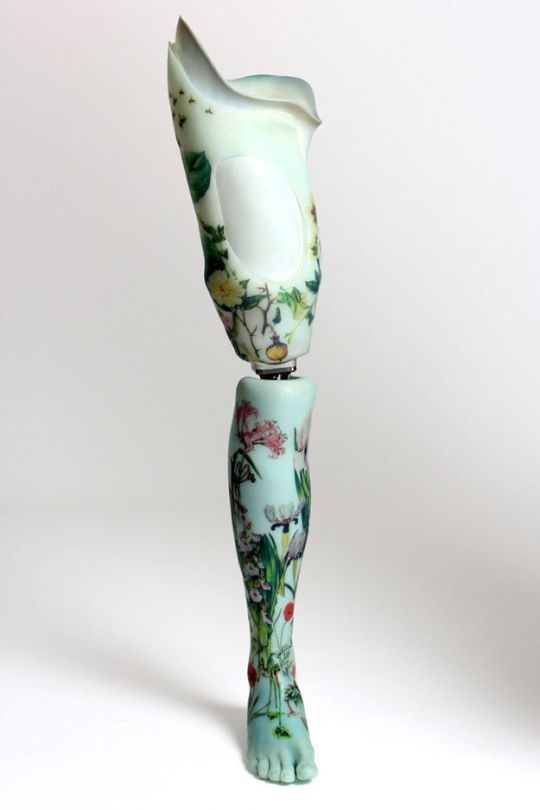
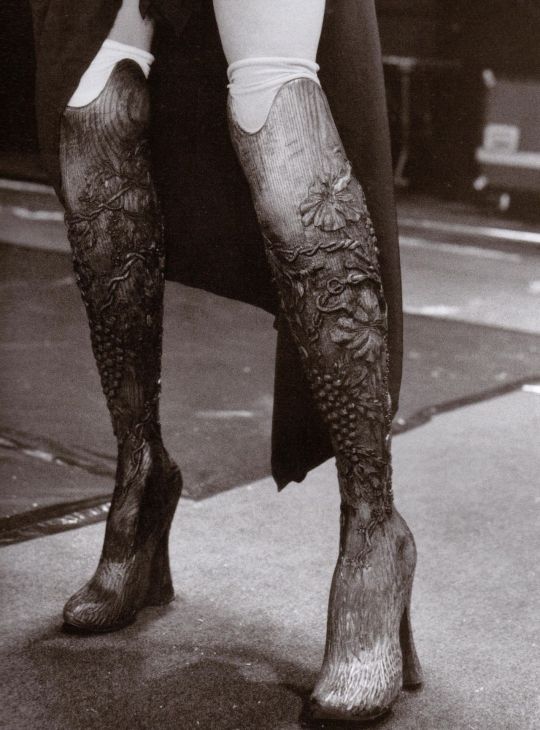

#eyerolling nauseating cringe inducing behavior#feel like she’d run a doll repaint channel but also now and then she’d randomly mod out a set of her legs#she very much wants to do a pair for lip as wel but lip cries if she’s the center of attention#(she definitely had made one in case she changes her mind tho…)#my asks
177 notes
·
View notes
Note
How do you get your prints to look so smooth?? I've always seen 3D printed minis with the distracting print lines but yours look great!
Hi! Thank you! You sent this ask MONTHS ago and I started to answer it and then forgot, and have found it in my drafts and now that I have a bit of free time I’m gonna finish it now. So, if you’re still interested in the answer months after you sent the question, here it is:
It’s a mix of things really
1. I use a resin printer (or what I’ve learned is actually called an SLA printer) NOT an FDM printer. I think I say this every time someone asks me about my printer and that’s because when I first started researching printing my own minis I was picturing doing it with an FDM printer as was everyone I’ve ever talked to. So, what’s the difference?
FDM printers print with liquified plastic and look like this

With prints that look like this (I did not make these)

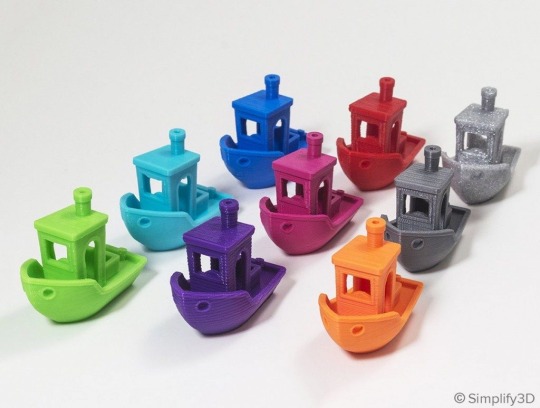
While resin (SLA) printers print with liquified resin and look like this

With prints that look like this
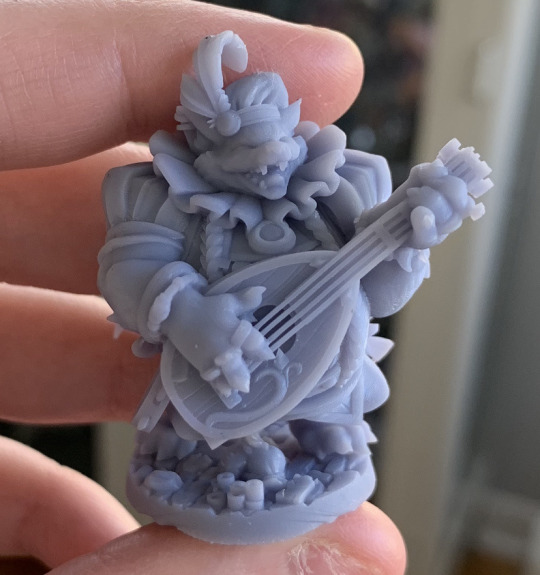


I made these :).
(They’re everywhere actually please help) (also sorry my nails are in view I chew on them)
When you search 3D prints like 90% of the prints you’ll find are FDM and have those big layer lines, resin prints do not but are not as common and there IS a reason for that and that’s because
A) FDM printers are a lot more versatile
B) FDM prints are a lot stronger.
Those cute little octopuses with the dangly tentacles could not be made with a resin printer because they would break in like 30 seconds if they could be printed at all. FDM prints also have practical value like as gears or tubes or straight up prosthetic limbs, resin printers basically JUST print models, and again, there is a reason for that. Resin printers are really good at fine detail
Like


REALLY good at fine detail
But that detail is FRAGILE! I’ve had resin prints break just from being picked up, you CAN print in stronger resin, but that often sacrifices detail, so it’s all a matter of if you want detail or sturdiness.
The settings on your printer also have to do with how smooth they come out. Resin printers make the models by curing the resin with UV light. It’s kind of hard to explain without getting CRAZY technical, but basically, what it does is you pour in the resin as a liquid into a vat at the bottom of the machine, this vat has a clear bottom, separated from a screen that sits directly below it. As it prints, that screen shines UV light in a pattern, and does that layer by layer until eventually it builds into a full model. Here’s an example of what one layer looks like to the machine

(it looks like an ink splotch)
The amount of time spent exposed to this light has a lot to do with the detail. 1.5 seconds is the default for my printer and the setting I’ll use for smaller models, as the less time spent exposed the better for detail. However, for larger models I’ll sometimes do 3 seconds exposure, as that’s more sturdy, and when the details are larger the difference between 3 seconds 1 second is almost completely unnoticeable. While on the smaller models I’ve noticed 3 seconds leaves them looking. Gooey
And resin prints DO still have noticeable layers, they’re just much thinner and easily obscured by paint


Again, this is something you can adjust and is a detail vs strength thing. My printer’s default layer height/thickness is 0.050 millimeters and I have NEVER touched it. That’s plenty small for me
And lastly: You gotta clean them
When you print a resin miniature, it’s still been swimming in a vat of liquid resin for hours on end and is gonna have some excess goo on it. You get that off by dunking it in a bath of IPA alcohol aka a bath of 99.9% alcohol. I keep them in that bath for 6 minutes and use a machine made by the same company that makes the printer specifically for the cleaning process, though some people just put the alcohol in a bucket and dunk the mini and out a few times and that works fine too. I am just lazy
OKAY that was a lot, so TLDR, how do I get my 3D prints so smooth?
1. I use a resin/SLA printer specifically designed for printing models
2. I adjust the settings of this printer based on the size/detail of the model
3. I clean the models thoroughly after printing
That’s it! The printer itself is the most important part here, and I’ve seen some BEAUTIFUL stuff come off of FDA printers! I’ve been thinking about investing in one myself one day, but for now, resin is best for what I need.
37 notes
·
View notes
Text
I love watching ppl 3d print prosthetics, stick it to man besties, make your own limbs
3 notes
·
View notes
Text
As the world of robotics continues to expand, engineers and scientists are constantly looking for ways to optimize and improve the performance of their creations. One unexpected source of inspiration for creating jumbo brackets for robots has been the humble cantaloupe.
Cantaloupes, also known as muskmelons, are a type of fruit that are typically larger than other types of melons such as watermelons or honeydew melons. This is due to their unique growth pattern, as they grow in large clusters on the vine and have a tendency to absorb more water than other fruits.
But what does this have to do with creating brackets for robots?
Well, the key lies in the durability and strength of cantaloupes. Despite their size, cantaloupes are surprisingly sturdy and can withstand a considerable amount of weight without collapsing. This is due to the thick rind, or outer skin, of the fruit which is made up of a tough and fibrous material.
Engineers saw potential in the structural integrity of cantaloupes and began studying its properties in order to create stronger and more durable brackets for their robots. By using a special 3D printing technique, they were able to replicate the unique texture and strength of the cantaloupe's rind to create brackets that are not only strong, but also lightweight.
These jumbo brackets have been used in various robotic applications, such as in industrial robots that need to support heavy loads or in prosthetic limbs for humans that need to withstand a significant amount of weight. The use of cantaloupe-inspired brackets has also allowed for more complex and sophisticated designs, as the strength of the brackets allows for a wider range of movement and flexibility.
Aside from their strength and durability, cantaloupes also provide a cost-effective solution for creating jumbo brackets for robotics. The fruit is readily available and inexpensive, making it a practical choice for large-scale production.
Furthermore, using cantaloupe-inspired brackets also has environmental benefits. As they are made from a natural and biodegradable material, they have a lower impact on the environment compared to traditional metal or plastic brackets.
Innovations such as these showcase the potential for nature to provide inspiration for new and improved technologies. The use of cantaloupe-inspired brackets not only shows the versatility and resilience of this fruit, but also opens up possibilities for other fruits and plants to be used in the creation of robotics and other industries.
So the next time you enjoy a juicy slice of cantaloupe, remember that this humble fruit has also played a vital role in the advancement of technology and robotics.
0 notes
Text
Technology is advancing at an incredible rate, and with it comes a whole host of high-tech gadgets that seem like they are straight out of a science fiction movie. From robots that can cook your dinner to Virtual reality headsets that transport you to another world, the future is now. In this article, we will explore some of the most innovative and mind-blowing gadgets that are currently on the market.
1. Self-Driving cars
Self-driving cars have been a dream of futurists for decades, and now they are finally becoming a reality. Companies like Tesla, Google, and Uber are all working on developing autonomous vehicles that can navigate the roads without any human intervention. These cars use a combination of sensors, cameras, and artificial intelligence to safely drive passengers to their destinations. While self-driving cars are still in the testing phase, they are expected to revolutionize the way we travel in the near future.
2. Smart Homes
Gone are the days of manually adjusting your thermostat or turning off lights before bed. Smart home technology allows you to control every aspect of your home with the touch of a button or even just your voice. From smart thermostats that learn your preferences to voice-activated assistants that can play music or order groceries, the possibilities are endless. With smart home devices, you can make your home more efficient, secure, and convenient than ever before.
3. Virtual reality Headsets
Virtual reality headsets have been around for a few years now, but the technology has advanced rapidly in recent years. These headsets allow you to immerse yourself in a virtual world, whether you're playing a game, watching a movie, or exploring a new city. The experience is so realistic that you'll feel like you're actually there. Virtual reality is changing the way we interact with technology and is opening up new possibilities for entertainment, education, and even therapy.
4. Drones
Drones have become increasingly popular in recent years, and for good reason. These small, unmanned aircraft can be used for a variety of purposes, from aerial photography to package delivery. Drones are equipped with cameras, GPS systems, and other sensors that allow them to fly autonomously or be controlled by a remote pilot. Whether you're a hobbyist looking to capture stunning aerial footage or a company looking to streamline operations, drones are a versatile and exciting technology.
5. 3D Printers
3D printing is a revolutionary technology that allows you to create physical objects from digital designs. These printers use a variety of materials, from plastic to metal, to build objects layer by layer. With a 3D printer, you can create anything from jewelry to furniture to prosthetic limbs. The possibilities are endless, and as the technology continues to advance, 3D printers are becoming more accessible and affordable for consumers.
6. Wearable Technology
From smartwatches to fitness trackers, wearable technology has become increasingly popular in recent years. These devices can track your heart rate, count your steps, and even monitor your sleep patterns. Some wearables can also display notifications from your smartphone or even make payments. With wearable technology, you can stay connected and informed without having to constantly check your phone. The future of wearables is bright, with new devices being developed all the time.
FAQs
Q: Are these high-tech gadgets affordable for the average consumer?
A: While some high-tech gadgets can be expensive, prices are continually dropping as the technology becomes more widespread. Many companies offer financing options or payment plans to make their products more accessible to consumers.
Q: Are these gadgets easy to use for someone who is not tech-savvy?
A: Most high-tech gadgets are designed to be user-friendly, with intuitive interfaces and simple setup processes. Many companies also offer customer support and tutorials to help users get the most out of their gadgets.
Q: What are some upcoming high-tech gadgets that we can look forward to?
A: Some upcoming high-tech gadgets to look out for include augmented reality glasses, personal flying vehicles, and brain-computer interfaces. These technologies are still in development, but they have the potential to revolutionize the way we live and work in the future.
0 notes
Text
The Unexpected Heroes of Innovation: How Everyday People are Shaping the Future
Innovation. It conjures images of Silicon Valley giants and research labs filled with white coats. But the truth is, innovation thrives not just in sterile environments, but in the messy, vibrant world around us. The most groundbreaking ideas often come from the most unexpected places, driven by the ingenuity of everyday people.
The Democratization of Innovation: From Gatekeepers to Grassroots
The internet has shattered the traditional model of innovation, where a select few control the resources and funding. Today, the playing field is more level than ever before. Anyone with a curious mind and an internet connection can access vast resources, collaborate with like-minded individuals across the globe, and turn their ideas into reality. Crowdfunding platforms allow brilliant concepts to bypass traditional gatekeepers and find funding directly from the public. Open-source software development empowers individuals to contribute to projects that benefit millions.
Think about it: the teenager who tinkers with code in their basement might develop the next revolutionary app that disrupts an entire industry. The stay-at-home parent with a passion for sustainability could invent a game-changing recycling technology that tackles a global environmental challenge. The retiree with a knack for problem-solving might devise a simple yet ingenious solution to a longstanding challenge in their community, improving the lives of countless people.
Everyday Innovation in Action: A Tapestry of Ideas
The stories of everyday people driving innovation are as diverse as the problems they solve. Here are just a few glimpses into this vibrant tapestry of ideas:
Citizen Science: From Backyard Birds to Distant Galaxies Apps and online platforms empower ordinary citizens to contribute to scientific research in a meaningful way. From monitoring bird migration patterns in their backyard to classifying galaxies through online platforms, everyday people are actively contributing to scientific discovery and expanding our understanding of the universe.
The Maker Movement: From Imagination to Invention The rise of 3D printing and accessible coding tools has fueled a global DIY movement known as the Maker Movement. Makerspaces provide a collaborative environment for people to turn their ideas into tangible products, fostering creativity and innovation at the grassroots level. Imagine a young student tinkering with a 3D printer, designing a prosthetic limb that is not only functional but also affordable for those in need. This is the power of the Maker Movement in action.
Social Entrepreneurship: Addressing Challenges with Heart and Hustle Everyday heroes are tackling social and environmental challenges with innovative solutions. From developing low-cost water purification systems to creating educational programs for underprivileged communities, social entrepreneurs are making a positive impact on a global scale. Take, for instance, the story of a young woman who designs and distributes solar-powered lamps in rural areas, empowering communities and improving their quality of life.
*Technology as the Great Enabler: Fueling Everyday Innovation
Technology plays a crucial role in supporting and amplifying the work of every day innovators. Here's how:
Cloud Computing: Democratizing Processing Power Cloud computing platforms provide access to powerful computing resources that were once the exclusive domain of large corporations. This empowers individuals to tackle complex projects that would have been impossible with limited local resources. Imagine a team of students developing a groundbreaking climate modeling application – cloud computing allows them to access the processing power needed to run complex simulations, making their research project a reality.
Collaborative Tools: Working Together, Virtually Collaborative tools allow geographically dispersed teams to work together seamlessly on projects. This fosters innovation by enabling individuals with diverse skill sets to come together and contribute their expertise, regardless of location. Imagine a team of engineers in different countries working together in real time to design a new prosthetic limb, leveraging video conferencing and collaborative design software to bridge geographical barriers.
Open-Source Knowledge Sharing: Open-source software development allows individuals to contribute to and benefit from a vast pool of code. This collaborative approach accelerates innovation and fosters a culture of knowledge-sharing within the tech community.
Appson Technologies: Your Partner in Innovation
At Appson Technologies, we understand the power of everyday ingenuity. That's why we're dedicated to providing the tools and resources that empower individuals to turn their ideas into reality. We believe that everyone has the potential to be an innovator, and we're here to help you take your ideas from concept to creation. Here's how we can be your innovation partner:
Freelance Talent Pool: Tap into a global network of skilled professionals to fill any gaps in your team's expertise. Find the perfect developer, designer, or marketing specialist to bring your vision to life.
Project Management Tools: Streamline your workflow and collaborate effectively with your team, regardless of location. Our project management tools keep everyone on the same page and ensure your project stays on track.
Technology Consulting: Get expert advice on the best technology solutions for your project needs. Our experienced
0 notes
Text
The Future of Health: Artificial Organs & Bionic Implants Market Insights
In the realm of healthcare, advancements in technology are continually reshaping the landscape, offering new possibilities for enhancing and prolonging human life. One area that holds immense promise is the development of artificial organs and bionic implants. These groundbreaking technologies have the potential to revolutionize the way we approach medical treatment, offering hope to patients with a wide range of conditions.
Artificial organs, also known as bioengineered organs, are designed to mimic the structure and function of natural organs in the human body. These devices hold tremendous potential for addressing organ failure, a leading cause of morbidity and mortality worldwide. From artificial hearts and kidneys to lungs and pancreases, researchers are making significant strides in creating devices that can seamlessly integrate with the body and perform essential functions.
One of the primary drivers behind the development of artificial organs is the growing demand for organ transplants. Despite advances in transplantation techniques, the supply of donor organs remains limited, leading to long waiting lists and, in some cases, preventable deaths. Artificial organs offer a promising alternative, potentially reducing the reliance on donor organs and providing more timely and accessible treatment options for patients in need.
Request the sample copy of report @ https://www.globalinsightservices.com/request-sample/GIS26948/?utm_source=Govind-Article
Moreover, bionic implants represent another exciting frontier in healthcare innovation. These devices combine biological and mechanical components to restore or enhance the function of damaged or impaired body parts. From bionic limbs and cochlear implants to retinal prostheses and neural interfaces, bionic implants are empowering individuals with disabilities to regain lost capabilities and improve their quality of life.
One of the key advantages of bionic implants is their ability to interface directly with the nervous system, enabling seamless communication between the device and the body. This neural integration allows users to control bionic limbs or prosthetic devices with remarkable precision, mimicking natural movement and sensation to a remarkable degree.
Furthermore, advancements in materials science and manufacturing techniques are driving progress in the development of artificial organs and bionic implants. From biocompatible materials that promote tissue integration to 3D printing technologies that enable custom fabrication, researchers have access to a diverse toolkit for creating innovative medical devices with unprecedented levels of functionality and durability.
While the field of artificial organs and bionic implants holds great promise, significant challenges remain on the path to widespread adoption. One such challenge is the need for rigorous testing and regulatory approval to ensure the safety and efficacy of these devices. Additionally, cost considerations and reimbursement policies may present barriers to access for some patients, limiting the widespread adoption of these technologies.
Despite these challenges, the future of health looks increasingly bright thanks to the continued advancements in artificial organs and bionic implants. As researchers, engineers, and healthcare professionals collaborate to push the boundaries of innovation, we can expect to see these transformative technologies play an increasingly prominent role in shaping the future of healthcare, offering new hope and possibilities for patients around the world.
0 notes
Text
Advancements in Finger Prosthetics: Restoring Functionality and Confidence for Finger Amputees
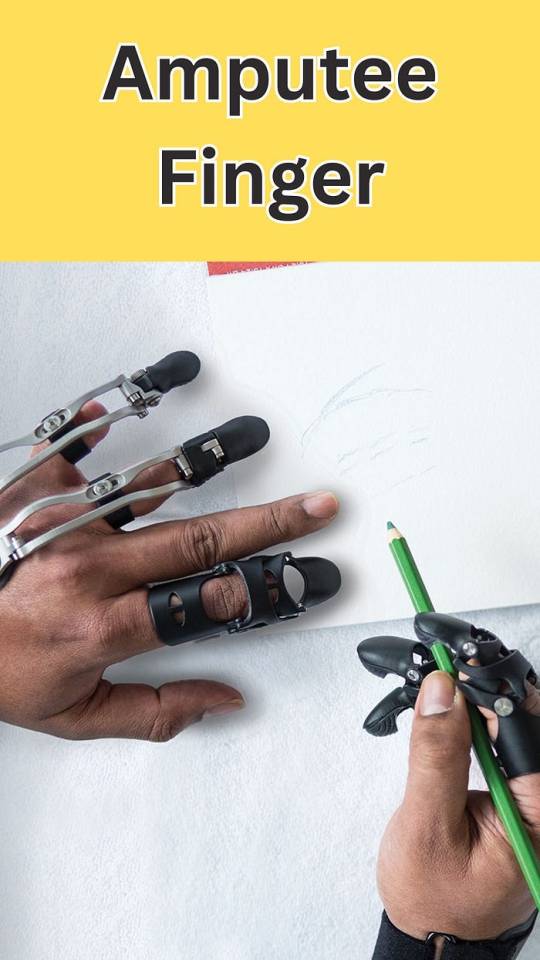
Finger amputation, whether due to trauma, congenital conditions, or medical procedures, can significantly impact an individual’s quality of life. However, advancements in prosthetic technology have made remarkable strides in restoring functionality and confidence to those who have lost fingers.
Finger prosthetics offer not just physical support but also emotional and psychological benefits, helping individuals regain independence and enhance their overall well-being.
Understanding Finger Prosthetics: Finger prosthetics are custom-made devices designed to mimic the appearance and functionality of natural fingers. These prosthetics are typically crafted from durable materials such as silicone, plastic, or metal, and are tailored to fit the unique anatomy of each individual’s residual limb. Advanced prosthetic designs incorporate innovative mechanisms that allow for natural movement and dexterity, enabling users to perform everyday tasks with ease.
Types of Finger Prosthetics:
Passive Prosthetics: Passive finger prosthetics are designed primarily for cosmetic purposes, providing a natural-looking appearance to the amputated finger. While they do not offer active movement, they can help restore symmetry and aesthetic balance to the hand, thereby improving self-esteem and body image.
Functional Prosthetics: Functional finger prosthetics are engineered to replicate the movement and grip strength of natural fingers. These prosthetics may incorporate mechanical or electronic components, such as cables, springs, or sensors, to enable precise control and articulation. Users can manipulate objects, perform intricate tasks, and engage in activities that require manual dexterity, enhancing their ability to lead independent lives.
Recent Technological Innovations: Recent advancements in 3D printing technology have revolutionized the field of prosthetics, enabling the creation of highly customized and intricately detailed finger prosthetics. 3D scanning techniques allow prosthetists to capture precise measurements of the residual limb, ensuring a snug and comfortable fit for the prosthetic device.
Furthermore, the integration of microprocessor-controlled systems has enhanced the functionality of finger prosthetics, enabling intuitive movement and adaptive grip patterns. These smart prosthetic solutions can adjust their grip strength based on the object being held, providing users with greater versatility and control.
Benefits of Finger Prosthetics:
Restored Functionality: Finger prosthetics enable individuals to perform essential activities of daily living, such as grasping, manipulating objects, and completing fine motor tasks, with greater ease and efficiency.
Improved Confidence: By restoring the natural appearance of the hand and enhancing its functionality, finger prosthetics can boost self-confidence and body image, empowering individuals to engage more confidently in social interactions and professional environments.
Enhanced Quality of Life: Finger prosthetics offer amputees the opportunity to regain independence and autonomy, allowing them to pursue their interests, hobbies, and career aspirations without limitations.
Challenges and Considerations: While finger prosthetics offer significant benefits, several challenges remain, including accessibility issues, cost barriers, and the need for ongoing maintenance and adjustments.
Additionally, the emotional and psychological impact of limb loss should not be overlooked, and comprehensive support services, including counseling and peer support groups, are essential for addressing the holistic needs of finger amputees.
Conclusion:
Finger prosthetics represent a remarkable fusion of engineering innovation, medical expertise, and compassionate care, offering hope and restoration to individuals affected by finger amputation. As technology continues to evolve and prosthetic capabilities expand, the future holds promise for even greater advancements in restoring functionality and enhancing the lives of finger amputees worldwide.
0 notes
Text
Upper Limb Prosthetics Market Size, Share & Growth Analysis, [2033] | With CAGR of 5.5%
The report titled “Upper Limb Prosthetics Market” has recently been added by We Market Research to get a stronger and more effective business outlook. It provides an in-depth analysis of the different attributes of the industry, such as trends, policies, and customers operating in different geographies. Research analysts use quantitative as well as qualitative analytical techniques to provide users, business owners, and industry professionals with accurate and actionable data.
The report includes an executive summary, global economic outlook, and overview sections which provide a consistent analysis of the Upper Limb Prosthetics market. Additionally, the report in the Market Overview section outlines PLC analysis and PESTLE analysis to provide a thorough analysis of the market. The overview section details Porter's five forces analysis which helps to reveal a possible scenario of the market by disclosing a competitive scenario with respect to the Upper Limb Prosthetics Market.
Get a Sample Copy of Report, Click Here: https://wemarketresearch.com/reports/request-free-sample-pdf/upper-limb-prosthetics-market/1449
Key companies profiled in this research study are,
Ossur
Otto bock
Steeper Group
Open Bionics
Comprehensive Prosthetics & Orthotics
COAPT LLC
Mobius Bionics
Protonic
Motorica
Other
Market Segmentation,
By Product Type
Passive Prosthetic Devices
Body Powered Prosthetic Devices
Myoelectric Prosthetic Devices
Hybrid Prosthetic Devices
By Component
Prosthetic Arm
Prosthetic Elbow
Prosthetic Wrist
Prosthetic Shoulder
Others
By End-user
Hospitals
Prosthetic Clinics
Others
The leading players of the Upper Limb Prosthetics industry, their market share, product portfolio, company profiles are covered in this report. Key market players are analyzed on the basis of production volume, gross margin, market value, and price structure. The competitive market scenario among Upper Limb Prosthetics players will help the industry aspirants in planning their strategies. The statistics presented in this report are an accurate and useful guide to shaping your business growth.
This research report also presents practical and practical case studies to help you get a clearer understanding of the topic. This research report has been prepared through industry analysis techniques and presented in a professional manner by including effective information graphics whenever necessary. It helps ensure business stability and rapid development to achieve notable remarks in the global Upper Limb Prosthetics market.
Purchase a Copy of this Market research report at@ https://wemarketresearch.com/purchase/upper-limb-prosthetics-market/1449?license=single
Finally, Upper Limb Prosthetics Market report is the believable source for gaining the Market research that will exponentially accelerate your business. The report provides locales, economic conditions, item values, benefits, limits, creations, supplies, requests, market development rates, and numbers, etc. Upper Limb Prosthetics Industry Report Announces Additional New Task SWOT Examination, Speculation Achievement Investigation and Venture Return Investigation.
Report Customization Service:
We Market Research customizes the report according to your needs. This report can be personalized to suit your requirements. Get in touch with our sales team so you can get a report tailored to your needs.
Related Reports
Green Hydrogen Market
3D Printing Materials Market
Spray Foam Insulation Market
Oncology Drugs Market
About We Market Research:
WE MARKET RESEARCH is an established market analytics and research firm with a domain experience sprawling across different industries. We have been working on multi-county market studies right from our inception. Over the time, from our existence, we have gained laurels for our deep-rooted market studies and insightful analysis of different markets.
Our strategic market analysis and capability to comprehend deep cultural, conceptual and social aspects of various tangled markets has helped us make a mark for ourselves in the industry. WE MARKET RESEARCH is a frontrunner in helping numerous companies; both regional and international to successfully achieve their business goals based on our in-depth market analysis. Moreover, we are also capable of devising market strategies that ensure guaranteed customer bases for our clients.
Contact Us:
Mr. Robbin Joseph
Corporate Sales, USA
We Market Research
USA: +1-724-618-3925
Websites: https://wemarketresearch.com/
Email: [email protected]
#Prosthetics#UpperLim#MedicalDevices Innovation#Technology#Healthcare#Rehabilitation#Amputees#BionicLimbs
0 notes
Text
3D Printing In Classroom: A Hands-On Approach To STEM Education
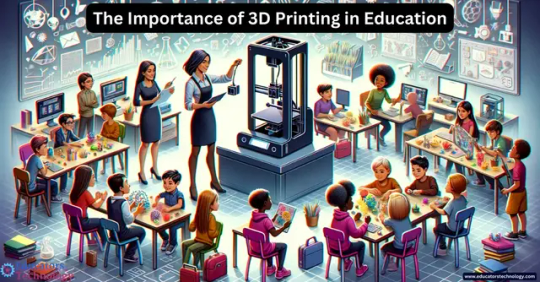
The education system is continuously evolving through technological advancements paving way for better education and intellectual citizens of tomorrow. Online learning, EdTech innovations, gamification and immersive learning have reshaped the way concepts are taught, making education a more fun and an engaging experience. 3D printing is a novel addition to the technological spectrum of contemporary educational system. With the introduction of 3D printing in education, educational institutions can give a better understanding of complex concepts especially in STEM that encompasses the disciplines of Science, Technology, Engineering and Mathematics. The 3D Printing Market in Education Sector size is estimated to grow at a CAGR of 23.49% between 2022 and 2027.
In this blog we give you a brief overview of how integrating 3D printing in STEM education can enhance the overall learning experience for students while diving into the benefits of 3D printing in education.
What is 3D printing?
3D printing is the process of converting your digital CAD files, like the .STL format into a three-dimensional physical object. The digital files are created using CAD software and then printed using a slicer software. The 3D printing slicer software slices the digital file into multiple layers and generates a geometric code that instructs the 3D printer to follow a certain path to print the object. The object is printed layer by layer hence making it a part of the additive manufacturing process.
What are the Benefits of 3D Printing in Education?
Education in a STEM discipline requires more practical knowledge and hands-on training to understand the concepts better. There is an evident difference between theoretical bookish knowledge and what one learns via practical experimentation. And this is where the use of 3D printing in education comes into play.
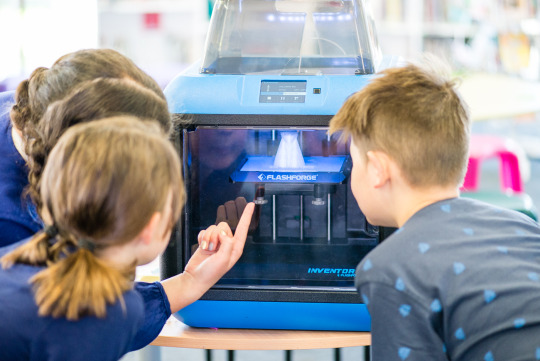
Enhancing student engagement
Picture two scenarios: First one is where the teacher is reading out paragraphs from the textbook and drawing certain diagrams on the board to explain a scientific concept. Second scenario is where the teacher comes with the physical objects in hand to explain you the concepts.
Now which scenario would keep the students engaged and intrigued in knowing more about the subjects? The second one, obviously!
The hands-on nature of 3D printing in STEM education captures students' attention, fostering a deeper interest in STEM subjects and promoting active participation in the learning process.
Give Room to Creativity & Innovation
Students are encouraged to think creatively and solve real-world problems by designing and prototyping solutions using 3D printing technology. 3D printing is like providing students with a blank canvas and a set of vibrant colors, allowing them to paint their imaginative ideas into tangible reality.
For instance, in a physics class, students might create a working model of a simple machine like a lever or pulley, exploring innovative ways to improve its efficiency.
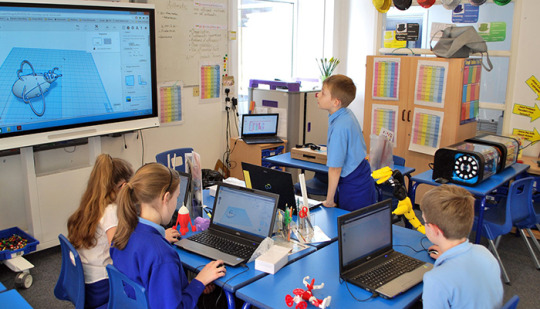
Hands-on Practical Training of Subjects
3D printing allows students to apply theoretical concepts from STEM subjects to tangible projects, reinforcing understanding through hands-on experience.
In an engineering class, students can design and manufacture mechanical parts using 3D printing, providing practical insights into the product development lifecycle.
Improve Problem Solving & Critical Thinking Skills of Students
The natural synergy between 3D printing and STEM education lies in their shared focus on problem-solving, critical thinking, and creativity. Utilizing 3D printing in the classroom can bridge the gap between theoretical concepts and real-world applications, making STEM subjects more engaging and relevant for students. Students tasked with designing a functional prosthetic limb ing 3D printing must overcome challenges relating to materials, ergonomics and functionality.

Teaching Complex Subjects in an Easy Way
3D printing proves invaluable in visualizing geometric shapes and figures, making abstract concepts more tangible for students studying geometry.
In mathematics, students can create 3D-printed models of geometric shapes to understand spatial relationships, turning abstract theorems into tangible objects.
Preparation for Future Technologies
Exposure to 3D printing enhances students' familiarity with advanced technologies, contributing to their overall technological literacy. Acquiring skills related to 3D printing prepares students for future careers in industries where additive manufacturing is increasingly prevalent, such as manufacturing, design, and healthcare.
Conclusion
3D printing helps elevate the learning experience for students in various sectors like art, design, science projects, mathematics, etc. Mintcad supports printing your NFTs and we have our homemade Jullienne slicing software. Our slicing software is free to use and hence anyone who wants to print their digital files can use Jullienne to slice their digital file and connect with any 3D printer of your choice. Give your kids an engaging learning experience by leveraging 3D printing in education.
This content is originally published on Mintcad's Website: 3D Printing In Classroom: A Hands-On Approach To STEM Education
0 notes
Text
Forget Everything You Thought You Knew: 5 Hidden Tech Revolutions Happening Now!
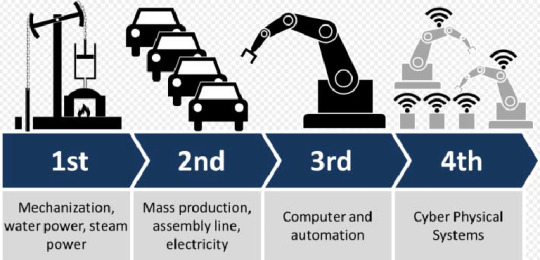
The tech world moves faster than a hummingbird with a jetpack. While everyone's obsessing over self-driving cars and robot butlers, there's a whole underground network of tech revolutions brewing beneath the surface. Buckle up, because we're about to dive into the most mind-blowing, under-the-radar tech advancements that are about to change the game (without you even realizing it!).
1. Brainwave Boogie: Your Thoughts Are Now Hackable (But Not in a Creepy Way... Hopefully)
Remember struggling to remember your grocery list? Those days are numbered! New brain-computer interface (BCI) tech is allowing us to directly communicate with machines using just our thoughts. Imagine controlling your prosthetic limb with your mind, or even learning a new language by downloading it straight into your brain! This isn't some dystopian nightmare; BCI tech has the potential to revolutionize healthcare, education, and even entertainment. Just picture playing the ultimate mind-controlled video game – winner takes all (and maybe a new neural upgrade)!
2. Green Giants: Plants Are Taking Over the Tech World (But They're Here to Help!)
Forget silicon chips, the future is bio! Scientists are harnessing the power of nature to create sustainable and eco-friendly tech solutions. We're talking about solar panels made from algae, batteries powered by mushrooms, and even biocomputers built from plant proteins! Not only is this tech good for the environment, but it opens doors for a whole new generation of flexible, self-healing, and even self-replicating devices. Imagine a phone case that grows its own screen protector – that's the power of plant-based tech!
3. The Sixth Sense is Here (and It Doesn't Involve Seeing Dead People)
Forget psychics, the future of intuition is in your clothes! Researchers are developing "smart textiles" embedded with sensors that can monitor your health, mood, and even your environment. Imagine a shirt that warns you when you're stressed, or pants that adjust their temperature to keep you comfortable. This isn't just about convenience; this tech could revolutionize healthcare by providing real-time health data and even triggering life-saving interventions! So, the next time you put on your clothes, remember, they might just be smarter than you think.
4. The Democratization of Innovation: You Too Can Be a Tech Genius (Even Without a Ph.D.)
Gone are the days when tech innovation was limited to Silicon Valley giants. The rise of open-source hardware and collaborative platforms is putting the power of creation in everyone's hands. Imagine designing your own 3D-printed prosthetic arm or building a personalized weather station for your backyard! This democratization of tech is fostering a wave of citizen inventors, and who knows, maybe your next big idea will change the world!
5. The Rise of the Machines... to Help Us, Not Hurt Us (We Hope!)
Okay, we know what you're thinking – robots taking over the world! But hold on a sec. Instead of fearing AI, what if we harnessed its power for good? Imagine using AI-powered tools to tackle climate change, diagnose diseases before they even start, or even personalize your education to fit your unique learning style. The key is to ensure responsible development and ethical use of AI. So, let's work with the machines, not against them, and create a future where humans and AI collaborate to make the world a better place!
These are just a taste of the hidden tech revolutions happening right now. The future is full of possibilities, and it's up to us to shape it. So, stay curious, embrace the change, and who knows, maybe you'll be the one leading the next big tech revolution!
Don't Get Left Behind: How to Stay Ahead of the Tech Curve
The world of tech is a whirlwind, and it can be tough to keep up. New gadgets, software updates, and mind-blowing innovations are popping up faster than you can say "artificial intelligence." But fear not, tech adventurer! Here are some tips to help you navigate the ever-changing tech landscape and stay ahead of the curve:
Become a lifelong learner: Tech is constantly evolving, so the key is to embrace continuous learning. Read tech blogs, follow industry leaders, and watch educational videos. There's a wealth of free information available online, so take advantage of it!
Embrace experimentation: Don't be afraid to try new things! Whether it's exploring a new app, testing out a virtual reality headset, or attending a tech workshop, hands-on experience is the best way to learn. Who knows, you might discover your next favorite gadget or even stumble upon a hidden tech talent!
Connect with the tech community: There's strength in numbers! Join online forums, attend tech meetups, or connect with tech enthusiasts on social media. Surrounding yourself with people who share your passion for tech can be a great way to learn new things, get inspired, and stay up-to-date on the latest trends.
Think critically about the future: Tech isn't just about cool gadgets; it has the power to shape our world. Think about the potential impact of emerging technologies on society, the environment, and even your own life. By developing a critical lens, you can become a more responsible and informed tech user.
Don't be afraid to unplug: While staying informed is important, it's also crucial to take breaks from the constant tech buzz. Disconnect from your devices, spend time in nature, and engage in activities that stimulate your creativity. A healthy balance will allow you to approach the tech world with a fresh perspective and avoid information overload.
Remember, the future belongs to those who embrace change. So, put on your thinking cap, dive into the exciting world of tech, and join the journey towards a future filled with innovation and possibility!
This article was generated by AI with the intention of sparking discussion and entertainment. While the ideas explore potential future advancements, they may contain hypothetical or exaggerated elements. Always conduct your own research on emerging technologies before making decisions.
The accuracy of the information presented cannot be guaranteed, and it should not be taken as professional advice.
We are constantly working to improve the accuracy of our AI, but mistakes can still occur. If you see any errors or misleading information, please let us know.
0 notes
Text
Key Developments And Emerging Technologies In Medical Devices - A Decade of Innovation!
In the past decades, the field of medical devices has seen amazing growth and innovation.
EuroNoxx Medical Group is a leading provider to the NHS and private hospitals. It is at the forefront of this revolution. It makes sure healthcare facilities have the newest technologies.
They use these to give top care to patients. Several key developments have changed the global landscape. They have transformed healthcare management and technology use. These include breakthrough technologies and revolutionary advancements.
Let EuroNoxx Medical dig deeper into top emerging technologies that have made a significant impact on medical devices in the last decade, revolutionising patient care and improving treatment outcomes.
mRNA Technology:
mRNA (messenger RNA) technology has changed vaccine development. It has also changed treatment for various diseases. This technology was showcased a lot during the COVID-19 pandemic.
It lets the body make specific proteins. These proteins trigger the immune response we want.
The success of mRNA vaccines against COVID-19 has opened doors. They lead to better treatments for cancer, heart disease, and genetic disorders.
Virtual Reality (VR):
Virtual Reality technology has entered the medical device field. It offers immersive experiences and has many uses. Surgeons use VR to simulate complex procedures.
This allows for detailed practice and honing of skills. It avoids risking patient safety. VR therapy is also a promising tool for pain management. It can provide distraction during procedures and aid in exercises for rehabilitation.
Neurotechnology:
Neurotechnology has seen big advances. This is especially true for brain-computer interfaces (BCIs) and neurofeedback. BCIs enable direct brain-to-device communication. They let paralyzed people control prosthetic limbs and communicate through thought commands.
Neurofeedback devices are for brain training. They help people enhance their brain patterns. This improves mental health and thinking.
Artificial Intelligence (AI):
Medical devices now integrate Artificial Intelligence. It offers capabilities like data analysis, pattern recognition, and predictive modelling. AI algorithms provide valuable insights for diagnosis, treatment planning, and personalised medicine.
Machine Learning algorithms help identify diseases in medical images. They improve accuracy and efficiency. AI-driven healthcare systems also facilitate real-time monitoring. They also enable early detection of potential health risks.
3D Printing:
3D printing has revolutionised the making of medical devices. They range from prosthetic limbs to custom implants. This technology allows for detailed, patient-specific designs. They ensure a perfect fit and better function.
Also, 3D-printed surgical models help with pre-surgical planning and education. They let surgeons understand complex procedures better and improve patient outcomes.
Precision Medicine:
The concept of precision medicine has gained considerable traction in recent years. It involves tailoring medical treatment to an individual's specific traits.
These traits include genetic makeup, lifestyle, and the environment. Genomics, diagnostics, and data analytics have advanced. They allow for personalised treatment and targeted therapies. This improves patient outcomes and minimises adverse effects.
CRISPR:
CRISPR is a gene-editing technology. It has sped up research on genetic disorders and potential treatments. CRISPR modifies or deletes specific genes. It can treat genetic diseases. It can improve current treatments. It can enhance disease prevention.
Health Wearables:
Health wearables are very popular these days. They include smartwatches, fitness trackers, and biosensors. They monitor health and promote wellness.
These devices provide data in real-time. They show heart rate, sleep patterns, and activity. They also show more. Wearables now work with smartphone apps and cloud platforms. This lets users and healthcare providers track and manage health better.
Technology in Mental Health:
Advancements in technology have also extended to the field of mental health. Digital mental health platforms offer innovative solutions for therapy, counselling, and self-care.
These platforms use AI-powered chatbots, virtual therapists, and mobile apps. They provide mental health support, symptom tracking, and personalised interventions. They fill gaps in traditional mental healthcare systems.
The Impact of Technology on Diagnostics:
The first step in effective treatment is accurate diagnosis. Advanced diagnostic instruments, like MRI, CT, and X-ray machines, have improved doctors' ability. They can now diagnose conditions with precision and speed.
These patient monitoring technologies produce detailed images of the body's internal structures.
They let us detect diseases and conditions early stages.
These would be invisible to the naked eye. High-resolution images let medical professionals make better decisions about patient care. This leads to better outcomes and happier patients.
Enhancing Treatment with Surgical Instruments:
The development of tech-driven surgical tools has revolutionised the way surgeries are performed. Hospital equipment such as laparoscopes, robotic surgical systems, and laser tools, has made minimally invasive surgeries accessible.
They reduce the need for open incisions. This minimises the risk of infection and complications. It also substantially reduces recovery times. This allows patients to return to their daily lives more rapidly.
EuroNoxx Medical Group is committed to supplying these new hospital equipment and surgical instruments. This commitment ensures that hospitals can offer the best treatment options. It improves the quality of healthcare.
Patient Recovery and Rehabilitation
Medical equipment's role goes beyond diagnosis and treatment. It is also crucial in patient recovery and rehab. For example, modern physiotherapy equipment helps patients. It helps them regain mobility and strength after surgery or illness.
Similarly, advanced patient monitoring systems allow continuous patient vital illness observation. They ensure that any problems are found promptly. This tech-driven approach to patient care improves patient recovery. It also significantly adds to patient safety and comfort during their hospital stay.
The Future of Healthcare Technology
As technology rapidly advances. This creates an enormous opportunity for more medical and hospital equipment to be incorporated into real-world healthcare systems.
AI and ML improve diagnosis accuracy. Telemedicine expands access to care. EuroNoxx Medical Group is dedicated to adopting these innovations.
We ensure that the NHS and private hospitals are always at the forefront of medical tech.
Conclusion:
The last decade has seen avant-garde in medical devices. They entrust healthcare professionals and help patients. New technologies, such as mRNA and virtual reality, are transforming diagnostic instruments.
They are also changing how we diagnose ecosystems, manage healthcare facilities, and control diseases. This includes intertwined Neurotechnology and AI, 3D printing, precision medicine, CRISPR, telemedicine, health wearables, and mental health tech.
State-of-the-art medical equipment and surgical devices are very important in modern healthcare. Their importance cannot be emphasized enough. They greatly improve diagnosis, treatment, and patient recovery. They enhance healthcare services a lot.
EuroNoxx Medical Group is key in supplying these technologies to the NHS and private hospitals. They ensure top-notch patient care. Advancements in medical technology will improve healthcare accessibility, efficiency, and effectiveness.
#Enhancing Treatment with Surgical Instruments#Patient Recovery and Rehabilitation#Future of Healthcare Technology
1 note
·
View note
Text
Navigating the Evolution of Medical Supplies: Enhancing Healthcare Accessibility and Efficiency

In the intricate ecosystem of healthcare, the significance of ιατρικά είδη cannot be overstated. From basic bandages to sophisticated surgical instruments, these supplies form the backbone of medical interventions, ensuring the delivery of quality care to patients worldwide. As the landscape of healthcare continues to evolve, propelled by advancements in technology and changing demographics, the realm of medical supplies undergoes a transformation, driven by innovation, sustainability, and the imperative of accessibility.
At the forefront of this evolution is the concept of smart medical supplies. With the integration of sensor technology, RFID tags, and data analytics, traditional supplies are metamorphosing into intelligent assets capable of enhancing patient safety, inventory management, and operational efficiency. For instance, smart syringes embedded with sensors can provide real-time feedback on injection technique, reducing the risk of medication errors and enhancing clinical outcomes. Similarly, RFID-enabled inventory systems enable healthcare facilities to track supply usage, automate reordering processes, and minimize waste, ultimately optimizing resource allocation and cost-effectiveness.
Moreover, the advent of 3D printing technology has revolutionized the manufacturing landscape, offering unprecedented flexibility and customization in the production of medical supplies. From prosthetic limbs to surgical implants, 3D printing enables healthcare providers to create patient-specific solutions with unparalleled precision and speed. This disruptive technology not only accelerates the delivery of care but also enhances patient satisfaction by tailoring interventions to individual needs, fostering a new era of patient-centered medicine.
In addition to technological innovation, the concept of sustainability is increasingly shaping the discourse surrounding medical supplies. With growing awareness of environmental conservation and the impact of healthcare waste, there is a concerted effort to embrace eco-friendly materials and practices in the production and disposal of medical supplies. Biodegradable sutures, reusable surgical instruments, and energy-efficient manufacturing processes are just a few examples of sustainable initiatives gaining traction within the healthcare industry. By prioritizing environmental stewardship, healthcare providers can minimize their carbon footprint and contribute to the preservation of planetary health while delivering optimal patient care.
Furthermore, the COVID-19 pandemic has underscored the importance of resilience and adaptability in the supply chain of medical supplies. From personal protective equipment (PPE) to ventilators, the global healthcare infrastructure faced unprecedented challenges in meeting the surge in demand for essential supplies during the pandemic. In response, stakeholders across the healthcare continuum are reevaluating supply chain strategies, embracing digitalization, and fostering collaborations to enhance supply chain transparency, agility, and resilience in the face of future crises.
As we navigate the ever-changing landscape of healthcare, the evolution of medical supplies stands as a testament to the transformative power of innovation, sustainability, and collaboration. By harnessing the potential of smart technologies, embracing sustainable practices, and fortifying supply chain resilience, healthcare providers can enhance accessibility, efficiency, and quality of care for patients around the world. As we forge ahead into a future defined by uncertainty and possibility, let us continue to innovate, adapt, and evolve, guided by the unwavering commitment to advancing the art and science of healing.
1 note
·
View note
Text
3D Printing in Fashion: Redefining Design, Manufacturing, and Sustainability
Introduction: The advent of 3D printing technology has sparked a revolution in the field of healthcare, offering innovative solutions for medical research, diagnosis, treatment, and patient care. In this article, we'll explore the transformative impact of 3D printing on healthcare, examining its applications across various medical disciplines and the benefits it brings to patients and healthcare providers alike.

Personalized Medical Devices and Implants: 3D printing enables the creation of customized medical devices and implants tailored to the unique anatomical characteristics of individual patients. Surgeons can use patient-specific data from medical imaging, such as CT scans or MRIs, to design and fabricate implants, prosthetics, and orthopedic devices that fit precisely and function optimally, leading to improved treatment outcomes and patient satisfaction.
Surgical Planning and Simulation: 3D printing facilitates preoperative planning and surgical simulation, allowing surgeons to visualize complex anatomical structures and practice procedures before operating on patients. Patient-specific 3D models generated from imaging data help surgeons develop precise surgical plans, anticipate potential challenges, and enhance surgical precision, ultimately reducing operative time, minimizing risks, and improving surgical outcomes.
Medical Education and Training: 3D printing is revolutionizing medical education and training by providing healthcare professionals with hands-on learning experiences and realistic anatomical models. Medical schools and training programs use 3D-printed anatomical models to teach anatomy, surgical techniques, and procedural skills, allowing students to gain practical knowledge and proficiency in a safe and controlled environment.
Bioprinting and Tissue Engineering: Advancements in bioprinting technology enable the fabrication of three-dimensional biological structures, tissues, and organs using living cells and biomaterials. Bioprinting holds tremendous promise for regenerative medicine, organ transplantation, and drug discovery, offering potential solutions to address organ shortages, improve patient outcomes, and revolutionize the treatment of various medical conditions.
Patient-Specific Surgical Guides 3D Printers and Instruments: 3D printing facilitates the production of patient-specific surgical guides and instruments that enhance surgical precision and efficiency. Surgeons can use 3D-printed guides to navigate complex anatomical regions, accurately position implants, and execute procedures with greater confidence and accuracy, reducing intraoperative errors and complications while optimizing patient outcomes.
Assistive Devices and Rehabilitation Aids: 3D printing empowers individuals with disabilities by enabling the fabrication of customized assistive devices, prosthetics, and rehabilitation aids. Low-cost, customizable 3D-printed prosthetic limbs, orthoses, and mobility aids offer greater accessibility and affordability for patients in need, improving their quality of life and promoting independence and mobility.
Rapid Prototyping and Medical Research: Researchers and innovators leverage 3D printing technology for rapid prototyping and iterative design in medical device development and biomedical research. 3D printing accelerates the design iteration process, allowing researchers to quickly prototype and test novel medical devices, drug delivery systems, and biomedical implants, leading to faster innovation and breakthrough discoveries in healthcare.
Conclusion: The transformative impact of 3D printing on healthcare is revolutionizing medicine and patient care, offering personalized solutions, improving surgical outcomes, advancing medical education and research, and empowering patients with innovative technologies. As 3D printing continues to evolve and expand its capabilities, its potential to shape the future of healthcare remains boundless, promising a new era of personalized, precise, and patient-centered medicine.
0 notes